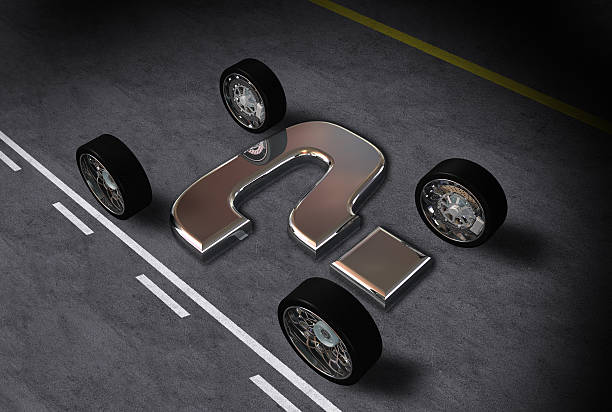Complete Guide to Buying Wheel Rim
A wheel rim, also known as a steel rim or wheel hub, is a ring-shaped steel rim that forms the skeleton of a wheel. The tire is mounted on the rim, and the rim's function is to support and secure the tire. A standard automotive wheel rim is made of a rectangular sheet of metal.

Wheel rims are a critical component of any vehicle, serving both functional and aesthetic purposes. Beyond their obvious visual impact, rims affect your vehicle’s performance, fuel efficiency, and handling characteristics. Whether you’re replacing damaged rims or upgrading for style, understanding the fundamentals of wheel rims will help you make an informed purchase decision that balances appearance, performance, and budget considerations.
Understanding Wheel Rim Materials and Types
When shopping for wheel rims, the material is one of the most important factors to consider. Alloy wheels, typically made from aluminum or magnesium alloys, offer significant weight reduction compared to steel alternatives. This weight reduction improves acceleration, braking performance, and fuel economy. Steel wheels, while heavier, provide durability and cost-effectiveness, making them popular for winter use in harsh conditions. Chrome and carbon fiber options are also available for those seeking premium aesthetics or maximum weight reduction, though these come at a higher price point.
How to Determine the Right Rim Size for Your Vehicle
Finding the correct rim size is crucial for both safety and performance. Wheel rim size is typically expressed in diameter (inches), width, and offset. Your vehicle’s owner manual contains the manufacturer’s recommended specifications, which should be your starting point. While slight deviations—known as plus-sizing—can be made for aesthetic or performance reasons, significant changes can negatively affect handling, speedometer accuracy, and component wear. When considering size changes, consult with a wheel specialist who can help you understand the implications for your specific vehicle model.
Factors to Consider When Shopping for Rims
Beyond size and material, several other factors should influence your wheel rim purchase. Load rating indicates how much weight each rim can safely support—this must match or exceed your vehicle’s requirements. Bolt pattern, measured by the number of lugs and the diameter of the circle they form, must be compatible with your vehicle. Offset (the distance from the mounting surface to the wheel’s centerline) affects handling and clearance. Additionally, consider seasonal use, driving conditions, and whether you’ll need separate winter wheels to protect your primary rims from salt and harsh conditions.
Popular Styles and Finishes for Wheel Rims
Wheel rim aesthetics vary widely, from classic five-spoke designs to complex mesh patterns and directional styles. Finishes include machined, painted, polished, chrome, and powder-coated options, each offering different visual effects and durability levels. Some modern alloy wheels feature two-tone or contrast finishes that highlight specific design elements. When selecting a style, consider how it complements your vehicle’s overall design language and your personal taste. Remember that more intricate designs often require more maintenance to keep clean and may be more susceptible to damage from road debris.
Where to Find Quality Rims for Sale
When searching for wheel rims in your area, you have several purchasing options. Dedicated wheel retailers offer expertise and often provide installation services, while automotive chain stores typically stock popular sizes and styles. Online retailers provide the widest selection but require you to arrange installation separately. Factory-authorized dealerships offer original equipment manufacturer (OEM) rims that guarantee compatibility but usually at premium prices. Local classified listings and specialty forums can be sources for used rims, though these require careful inspection for damage or wear before purchase.
Comparing Wheel Rim Options and Pricing
The cost of wheel rims varies significantly based on material, brand, size, and design complexity. To help you understand what to expect, here’s a comparison of common wheel rim options:
| Rim Type | Material | Average Price Range (per rim) | Best For |
|---|---|---|---|
| Steel Wheels | Steel | $50-$100 | Economy, winter use, durability |
| Cast Alloy | Aluminum alloy | $100-$300 | Daily drivers, balanced performance |
| Flow-Formed Alloy | Aluminum alloy | $200-$500 | Performance enthusiasts, weight reduction |
| Forged Alloy | Aluminum alloy | $400-$1,500+ | Premium applications, maximum strength |
| Chrome Plated | Various base materials | $200-$600 | Custom appearance, show vehicles |
| Carbon Fiber | Carbon composite | $1,000-$4,000+ | Racing, ultra-lightweight applications |
Prices, rates, or cost estimates mentioned in this article are based on the latest available information but may change over time. Independent research is advised before making financial decisions.
Installation Considerations and Maintenance Tips
Professional installation is recommended for wheel rims to ensure proper mounting, balancing, and torquing. Improper installation can lead to vibration, premature tire wear, and safety issues. Once installed, regular maintenance extends the life of your wheel rims. Clean them frequently with appropriate cleaners for their specific material and finish. Inspect for damage, particularly after hitting potholes or curbs. Consider seasonal protection strategies like waxing before winter or using rim protectors in harsh environments. Remember that proper tire pressure not only improves performance but also protects your rims from damage caused by underinflation.
Selecting the right wheel rims requires balancing aesthetics, performance needs, and budget considerations. By understanding the technical aspects of wheel rims and considering your specific driving conditions, you can make a choice that enhances both the appearance and functionality of your vehicle. Whether you prioritize lightweight performance, rugged durability, or head-turning style, there’s a wheel rim option that meets your needs without compromising safety or compatibility.




